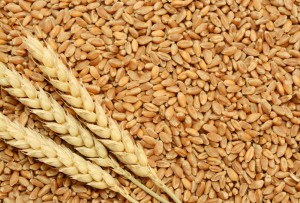
Vodka, Still Number One
There has been a lot of chatter lately about the decline of Vodka, and rightfully so. However, it’s still the king among spirits in the USA, making up about a quarter of all spirits sales. The worry is in the fact that less than a decade ago, Vodka accounted for one in three bottles of spirits sold in the nation. It can be reasonably argued that Vodka held such a lofty perch in sales that it had nowhere to go but down. At the moment, Vodka’s loss is Whiskey’s gain.
I remember a decade ago being a buyer in a major US retail wine and spirits outlet. At that time, a new Vodka was released at a rate of one per week. When I met a salesperson previously unknown, my first statement would often be, “So, what’s the name of your Vodka?” Again, such domination and market saturation left only one direction for Vodka sales to travel.
Love it or hate it, the USA is still a Vodka-drinking nation. For me, Vodka’s contributions to morning-after management via the Bloody Mary have earned a spot in my heart and my bar.
What’s in the Bottle (the anatomy of Vodka)?
Vodka, by definition (in the USA), is aimed to be colorless, odorless, and tasteless. Of course, we all know that this is a steaming pile of rubbish! Vodka does taste and smell of something, and the determining factor can be primarily traced to its roots, the raw materials.
Potato Vodkas often display a touch of sweetness and a discernible viscosity, making them exceptionally silky on the palate and finish. Wheat is often delicate with a subtle grain note, while corn is often the most delicate of all, offering a silky, soft note of talc. Rye is the assertive ingredient in the pantry of Vodka ingredients. When permitted to express itself fully, Rye creates spicy Vodka with viscosity to match. It is also often fruity and somewhat floral. Of course, there is an endless list of fruit sources for Vodka, ranging from grapes to pineapple and everything in between. It’s always important to remember that you can make Vodka from any fermented material beverage.

Vodka can be made from a wide range of materials
In a line-up of Vodkas crafted with varying materials, the rye Vodka will most likely be the oddity, in a very pleasing way, and will most definitely dispel any notions of odorless neutrality.
Despite the striking or subtle differences between Vodkas made of potato, wheat, rye, or corn, consumers seem to be largely unaware and unimpressed by the origin material. You will likely find more consumers who erroneously believe that all Vodka is made from potatoes than those concerned by the grain or tuber of choice.
The other aspect that cannot be overlooked is water. Not so coincidentally, water is one of the aspects that marketers use to sell Vodka. Water is absolutely crucial. It’s used in every aspect of production, and it plays a direct role in the spirit’s character and taste. Don’t forget that Vodka is distilled at a very high proof and then diluted with water. A good portion of that bottle on your bar is water.
Then, there is the aspect of fermentation. Trace mineral content and physical properties such as pH greatly influence fermentation. The real insider information is that fermentation will be the buzz and concern of spirits aficionados in the years to come, and Vodka is no exception.
How does Vodka make you feel?
Every product has a story, and when you are selling something deemed colorless, odorless, and tasteless, it often has to be a very clever story. Unlike wine, there are few stories of a family farm or vineyard lovingly cared for by generation after generation. The Scotch whisky folks often have beautiful, old stone-faced edifices with glimmering, bulbous, copper stills and romantic cellars with wooden casks laid out as far as the eye can see.

Vodka & Mood
Vodka has to be a bit more nimble in its lore, and these stories often center on the process. Three times, four times, twenty times distilled. Filtered 10 times through diamonds or the fine silk stocking of a fairy princess… What does this mean? Far too often, these claims mean nothing at all. The vast majority of Vodka is made in columns or continuous stills. The notion that the number of passes through these various column stills is pre-determined, counted, or that there may be an optimal number of times distilled is pure fantasy. Of course, all of this imparts a singular thought in your mind – purity.
Vodka marketing is frequently filled with claims regarding the number of times filtered to exalt the idea of purity further. Filtration counts have become the new “times distilled,” with the aim being imagery, and ironically, has nothing to do with clarity. Filtration is an essential and necessary part of the process, and there are many legitimate ways to get the desired results. However, if your Vodka is 10 times filtered, you may want to ask yourself why that was needed.
Beyond process is the classic product marketing technique of identity branding. How does this product make you feel? Unlike this magazine, BevX, Vodka can’t make you smarter, faster, more charismatic, or irresistible to the species of your choosing. Here, aspects of taste and value are mute while the client is seeking to make a statement, and that bottle is an accessory differing little from his designer jeans and wristwatch.
Vodka Flavors
Flavors are established brands’ most commonly used tool to gain market share and shelf space in the bloody Vodka wars. The big guys have churned out flavor after flavor, attacking the marketplace with a promotional budget commensurate with Estonia’s annual GDP. All of this begs the question, “How many orange Vodkas do you need?”
However, the state of flavored Vodka is far from bleak and tawdry. Today, Vodka producers are making flavors that are tastier, purer, and more mixable than ever before. I credit industrious bartenders who have created their flavors via fresh infusions. With many serious and adventurous bartenders making their own flavors, Vodka producers have been compelled to raise their game and develop flavors that rival the mixologist’s handmade efforts while offering greater product consistency.
This doesn’t mean we are not equally deluged with a sea of ridiculous flavors. We can’t seem to warm up to those whipped cream and bubble gum Vodkas.
At the end of the day, the most troubling thing with flavored Vodka is that you simply don’t know if the product is off-dry and pure or if it’s staggeringly sweet, often sweeter than the average Liqueur. While I would not suggest a new layer of regulation, I would encourage all flavored Vodka labels to include residual sugar numbers as a courtesy to consumers and bartenders. Just a thought…

Vodka is distilled around the globe
The Organic Question
Organic spirits. Are they better tasting, more pure, healthier, and worth the premium price often associated with organic products?
According to many who make organic spirits, there is likely no discernible difference between organic and non-organic Vodkas made of the same raw material type. The distillation process likely eliminates the inherent qualities of organic farming.
However, this does not make the organic issue frivolous or unimportant. Choosing organic products is a lifestyle choice and one that is being made by more consumers each day. Sipping organic Vodka has no health advantage, but by doing so, the consumer has chosen to back sustainable farming practices. In a category primarily driven by imagery and branding, the organic selling point is a refreshingly positive face on consumerism.
There can be no doubt that organic Vodka is a trend, not a fad. While the words “organic” on the label are no guarantee of good taste, they indicate that the producer has decided to buy a better and more costly raw material. Organic Vodka is here to stay.
The “Craft” Vodka Impact
Craft distillers now occupy every state and are soon to be found in every populated county, save this land’s stubbornly dry counties. Most craft distilleries offer Vodka, and some of them actually make the Vodka entirely from grain to bottle. Those who do produce their Vodka as opposed to redistilling or simply packaging purchased neutral grain spirit are frequently making damn good spirits.
Vodka, unlike Whiskey, can be turned rather quickly, being produced, bottled, and shipped in the same week in some cases. This offers essential cash flow for these upstart ventures. It also takes a bite out of imports.
Despite the decline in Vodka’s popularity and dominance, it’s still a vital player in every bar. The halt of the avalanche of new brand creations is a good thing as it allows us to once again view Vodka as an indispensable spirits category rather than a noisy commodity.
